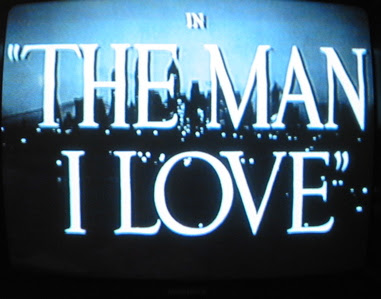The Man I Love

Given the opening shots – a high angle shot of a studio mockup of Manhattan skyscrapers, a closer shot of the 39 club – The Man I Love (Warner Brothers, Raoul Walsh) seems a throwback to the iconography and style of 1930s Hollywood.


Indeed, the genre-blending film seems most comfortable in the “marked woman” film territory that Warner Brothers specialized in during the late 30s. Ida Lupino plays Petey Brown, a big city nightclub singer who’s come back to her hometown to visit her family. She ends up singing in a nightclub owned by a notorious womanizer, who has the eyes on the blonde neighbor, and... let’s just say the plot is both complicated and typical. What’s unusual – and interesting from my perspective – is the inclusion of social problem material into the gangster and woman’s film. Like Susan Hayward in Smash-Up, Petey and her love interest are frustrated musicians whose personal demons drive them into alcoholic self-destruction.
 Meanwhile, the sister’s husband is a war hero veteran currently in the mental hospital. Unlike in the social problem film counterparts, these subplots never develop into explicit messages, but other than a couple of distinctly noir compositions (see right), the social relevance is probably the only indication the film is made after World War II. Everything else speaks back to pre-1945 films, even to the point of direct quotation from Casablanca and Stella Dallas in the last scene.
Meanwhile, the sister’s husband is a war hero veteran currently in the mental hospital. Unlike in the social problem film counterparts, these subplots never develop into explicit messages, but other than a couple of distinctly noir compositions (see right), the social relevance is probably the only indication the film is made after World War II. Everything else speaks back to pre-1945 films, even to the point of direct quotation from Casablanca and Stella Dallas in the last scene.Stylistically, I’m starting to notice that the voiceover usage is complex in these films. Sometimes, it’s a conventional flashback introduction, while at other times it has more the feel of an aggressive sound bridge.
The sexual forthrightness of the script is also striking. It’s often done with innuendo, much like a present-day television sitcom. Still, the narrative centers around every woman’s sexual permissiveness or restraint to a surprising degree of obsession.
Comments